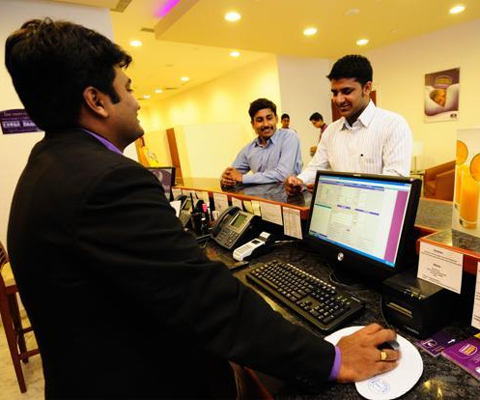What’s eating hospitality industry PR in India
PR Insight
 The ides of March, struck the hospitality industry hard this year. The ban on serving liquor within 500 metres of a highway, the demands by ministers for portion control on plates of food, the order by the South Delhi Municipal Corporation to hotels and restaurants to open up their toilets to the public; fresh challenges for an industry already dealing with considerable disruption.
The ides of March, struck the hospitality industry hard this year. The ban on serving liquor within 500 metres of a highway, the demands by ministers for portion control on plates of food, the order by the South Delhi Municipal Corporation to hotels and restaurants to open up their toilets to the public; fresh challenges for an industry already dealing with considerable disruption.
A PR opportunity if there ever was one. How should it play out?
Well-known food writer, Anoothi Vishal says that, “ The need of the hour for the industry is to engage in quiet, behind the scenes dialogues with stakeholders and policy makers and make them understand the nature of the business, which many populist leaders don’t seem to understand. Advocacy is required and lobbying.”
Piyush Kedia, the 20 something founder & CEO of Blue Vector agrees that some of their clients from Sector 29 and Cyber Hub have fallen victim to public opinion manipulation after the slew of orders around liquor and food wastage . However, Kedia says that, “Strategies to ensure timely response, silence (when required) and clamp down on promotional material helped contain damage.”
Kedia admits that, “Even after a crisis has subsided, it is important to ensure that a tangible difference is felt by the public - this could mean training staff, rethinking the rigidity of admissions or even starting personal relational dialogues with clients to regain advocates. At the end of the day you're in an industry where your reputation is affected by literally everything you do, and the solution is not to be paranoid but prepared.”
There is no doubt that while the industry may be limping back after the liquor ban, there are still ongoing PR challenges for restaurants and hotels.
Vishal points to the contentious service charge levy as an example. She says, “I don’t think restaurant goers are pro portion control or drinking ban. Service charge on the other hand is a different issue where popular sentiment is against restaurateurs. For that they just need credible media explaining what exactly service charge is and why must restaurants charge it.”
Looking at the micro level management of hospitality. Piyush Kedia not unsurprisingly flags off ORM as a key issue. Says Kedia, “ If your restaurant has a digital presence, make sure your agency is vigilant about both good and bad comments - good ORM can help you create advocates but no ORM can snowball the smallest chinks in your marketing communications into large PR fiascos. All in all the focus should be on making sure that all the potential holes are plugged because any new communication channel means new opportunities for disaster. Ask the restaurants who have lost customers because of a small string of consistently bad Zomato reviews!”
The Rich vs. Poor narrative in political mainstream
The hospitality industry has always been a soft target due to very nature of its’ services and a increasingly vocal online customer base. Recent political events in India have seen the emergence of the rich vs. poor narrative. This narrative has been further fuelled by the electoral successes of Narendra Modi where demonetisation was framed as a pro poor initiative.
Hospitality which has strong perceptions and associations as a platform for self-indulgence, naturally can become an easy target in such a situation.
Says Vishal, “Lobbying is required else any one with any hair brained idea will latch on to restaurants. The toilet scheme is an example. Free toilets are a function of governance why should businesses be arm twisted to provide these?”
Kedia agrees that ‘targeting’ often works under the guise of social justice and moral high-road. Kedia advises that is such a situation one should use social listening.
He says that, “The digital agency which you think is just helping bringing footfalls is actually setting up a forum for discussions between your customers and with more and more popular media formats, forums are gaining just that much more authority. In fact, one of the most efficient tactics brands can use is keep a video plan and spokesperson always on standby for such situations.”
If you enjoyed this article, you can subscribe for free to our weekly event and subscriber alerts.
Featured

PR professionals share their views on journalists publicly calling them out on story pitches

Auto blogger renders unconditional apology to Value 360 for defamatory posts

Hottest Indian startups of 2020, Paytm, Dreams 11 lead the charge: Wizikey Report




